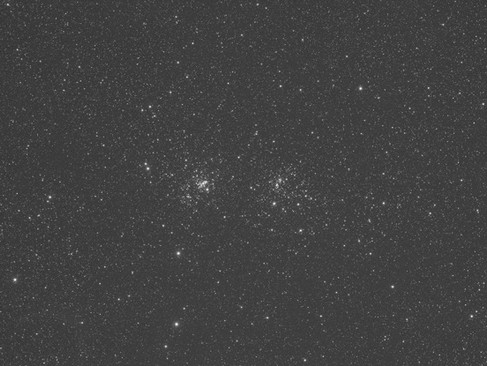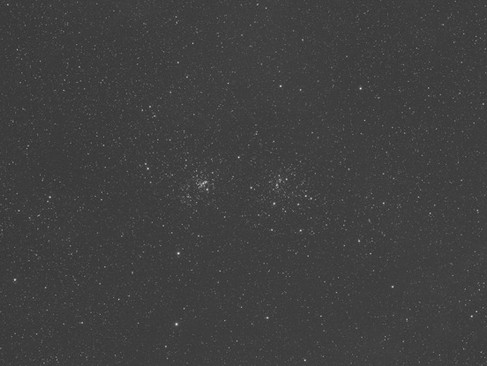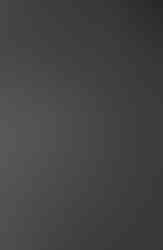NGC 869 & NGC 884 - The Double Cluster in Perseus Astrophotography
- Antoine & Dalia Grelin
- Nov 17, 2022
- 10 min read
Updated: Jun 8, 2023
NGC 869 and NGC 884, also named Caldwell 14 or simply The Double Cluster, are two clusters in the constellation Perseus. Both are very similar to each other in size, magnitude, and age. This bright pair of clusters is a great astrophotography target for beginners. In this post, you will find information, images, and tips to photograph The Double Cluster in Perseus.
Object Designation: NGC 869 and NGC 884, Caldwell 14
Also known as: The Double Cluster in Perseus
Constellation: Perseus
Object Type: Open Clusters
Distance: 7,460 and 7,640 light-years away
Magnitude: 3.7 and 3.8
Discovered in: Hipparchus, 130 BCE
The Double Cluster is bright and large, making it an easy target using any type of telescope and camera. We have imaged the two open clusters several times since starting astrophotography, and will show you our main attempts below!
The Double Cluster with a Refractor Telescope and Monochrome Camera
November 2022

This is our first light after setting up our 5" refractor telescope at a remote observatory in Utah!
We'll talk about this more in-depth later in this post for those of you interested in installing your telescope under a dark sky permanently.
The Double Cluster in Perseus is most of the time captured in RGB, but a few widefield images on the internet show a considerable amount of hydrogen alpha gas all around the two objects. I wanted to focus entirely on revealing as much HA as possible in this image, and it turned out awesome!
I spent one night capturing R, G, and B data. Then I spent 3 extra nights (20 hours) imaging but this time with a hydrogen alpha filter. Even with 20 hours of exposure in HA, it was difficult to bring out the gas during processing because it is still relatively faint in this area of the sky. Below is what I was able to achieve. You can see the beautiful Double Cluster and an incredible amount of HA gas behind and around. There are some tilt issues, but after countless nights trying to fix it, I'm now trying not to think about it as tilt keeps ruining my sanity.
Want to process your images following our own workflow? Download our PixInsight PDF Guide!
GEAR USED:
Camera: QHY600M
Telescope: Stellarvue SVX130
Mount: 10Micron GM1000 HPS
Guiding: ZWO ASI 290MM Mini
Accessories: Moonlite Nitecrawler focuser / Pegasus Astro Ultimate Powerbox
Processing: Pixinsight, with RC-Astro plugins
ACQUISITION DETAILS:
Total Exposure Time: 22.5 hours
Exposure Time per frame: 50 minutes each for R, G and B, 20 hours for HA
Filters: Chroma 3nm H/S/O
Gain: 56
The Double Cluster with a Beginner Reflector Telescope
October 2019
Our very first attempt at imaging the Double Cluster was in 2019, using our 8" Newtonian Astrograph and ZWO ASI 1600MM astrophotography camera. Back then, we said that we'd like to one day re-visit this target with a wider telescope, and do our best to frame a third star-cluster in the frame: NGC 957. It seems like we still haven't included this cluster in our latest image!
NGC 957 is much smaller and really isn't that impressive looking, but it is always nice to add an extra deep sky object in your image if you can!

We imaged the Double Cluster after spending three hours on the Bubble Nebula (NGC 7635). We decided to switch to this new target because our telescope was reaching the Meridian and was about to do a Meridian flip, so we decided to end it there for the Bubble. Sadly, right after this point, our guiding decided it was done for the night and refused to work. We had no choice but to image this target unguided.
Thankfully, we did not plan to take exposures longer than 30 seconds anyway as this is what we usually do for dense star clusters. We did not think it would turn out well so we spent less than half an hour on it. We kind of wish we kept going though as the image below is just 25 minutes of total exposure and doesn't look too bad!
NGC 869 & NGC 884 (LRGB), with the ASI 1600MM

GEAR USED:
Camera: ZWO ASI 1600mm Pro Mono
Telescope: 8" Newtonian
Mount: Motorized Equatorial Mount
Guiding: None (Did not work!)
Acquisition: ZWO ASIAIR
Processing: Pixinsight
ACQUISITION DETAILS:
Total Exposure Time: 25 minutes
Exposure Time per frame: 30 seconds
Filters: L (10 minutes) / R (5 minutes) / G (5 minutes) / B (5 minutes)
Gain: 139
How to Locate the Double Cluster in Perseus
NGC 869 and NGC 884 lie respectively 7,460 and 7,640 light-years away in the constellation Perseus. The pair of clusters is located very close to Cassiopeia's "W" shape, and people sometimes assume that the Double Cluster is in Cassiopeia.
The best time to capture the Double Cluster is in Fall. NGC 869 and NGC 884 are always above the horizon throughout the year, so you can tackle them any time as long as they are high enough from your location!

With an apparent size of 30' and magnitudes of 3.7 and 3.8 respectively, NGC 869 and NGC 884 are bright enough to be spotted with the naked eye and are usually easy to find if you are observing from a dark location.
The Double Cluster can be spotted in the middle of an imaginary line that links the Cassiopeia star Ruchbach, and the star Miram in the constellation of Perseus.
Looking at the double cluster through binoculars is a beautiful sight, with both clusters of stars looking like two worlds dancing together. A telescope will reveal an immense number of individual stars and a brighter center in each object.
The Double Cluster is found very close to two famous nebulae, the Heart Nebula and Soul Nebula.
The Double Cluster in Perseus Information
The Double Cluster lies in the Perseus arm of our Milky Way galaxy. Both clusters are young when compared to most other cluster groups, and are believed to be about 14 million years old. The Double Cluster is home to hundreds of young stars, including 300 blue-white supergiant stars in each object. Besides the stars within, the Double Cluster is also surrounded by a halo of stars, which altogether have a total mass of 20,000 solar masses.
NGC 869 has a mass of 4,700 solar masses, while NGC 884 has a mass of 3,700 solar masses. Both clusters are getting closer to Earth at a rate of 24 miles per second.

Above you can see two pictures, the top left one is a ground-based image of the Double Cluster. The one on the right is a section of the Double Cluster photographed by the Hubble Space Telescope.
This image was taken using the Wide-Field and Planetary Camera 2 installed on the HST, with a single visible-light filter processed in Blue. Because of the long focal length, the Hubble Space Telescope could not capture the whole Double Cluster, so instead photographed a small portion of NGC 884. A fun fact about this image is that the Hubble Space Telescope was actually busy imaging a different target, and used its free camera to capture this as a parallel observation.
The Double Cluster is a magnificent object, both visually and in images. In Greek mythology, NGC 869 and NGC 884 represent the jewels from the handle of Perseus' sword.
It obviously deserves its spot in the Caldwell catalog, a compilation of the 109 most visually impressive deep sky objects that are not in the Messier Catalog. Created in 1995 by Patrick Moore, the Calwell catalog is a great list for beginner astrophotographers looking for bright and easy objects to capture, both from the northern and southern hemispheres.
Our Premium Astrophotography Course
Want to learn all aspects of astrophotography in the most efficient way possible?
The Galactic Course includes a LIFETIME membership that gives you unlimited access to all current and upcoming astrophotography content. Step into an ever-growing realm of knowledge and learn at your own pace. Make life-long friends and connections with other members, and get tips from instructors that truly care about your journey and progress under the night sky.
Utah Desert Remote Observatories
In November of 2022, we drove 3 hours to Southern Utah to meet with Craig Stocks, the owner of a new observatory: Utah Desert Remote Observatories (UDRO).

The observatory was built under very dark skies that fluctuate between Bortle 1 and Bortle 2 and can host a total of 18 different telescopes. We've known Craig since the very beginning of this project and it was fun to visit the location a couple of times throughout the construction.
Now, the observatory is finished and officially ready to host telescopes!
We currently have our 5" refractor installed in the observatory, and can now control it remotely on every clear night which is fantastic. This image of the Double Cluster is our first light from the observatory, and we couldn't be happier.

You can see all the weather information on the Utah Desert Remote Observatories weather page, along with live camera views of the building and telescopes! Can you spot ours? You can check these cameras to see how many spots are still available, and contact the observatory if you are interested in setting up your rig next to ours.
UDRO email address: info@utahdesertremote.com
Single Shot and Processing the Double Cluster
In our 2022 attempt, we imaged the Double Cluster in Perseus with 4 filters:
Red (R)
Green (G)
Blue (B)
Hydrogen-Alpha (Ha)
Below you can see what a single shot looked like for each filter. There wasn't really a point in using the Luminance filter for this cluster. The Red, Green, and Blue filters are used to grab the colors for the stars and nothing else.
Double Cluster single shot in R, G, B (30 sec), and H (600 sec)
Processing the 2019 image was very simple, but the 2022 one was tricky!
As I said, I wanted to do my best to reveal the faint hydrogen alpha gas all around the Double Cluster. For this, I first removed all the stars from the HA image and processed the starless file very carefully to bring out as much signal as possible without making it grainy.
I then colored the file as naturally as possible and added the RGB stars on it at the end. I did not do much to the stars except for reducing them in size.
The Hydrogen Alpha around the Double Cluster in Perseus
To better visualize how much HA there is present around the Double Cluster, take a look at the images below! On the left is the Master HA file, totaling 19 hours of exposure time, before doing any processing to it. On the right is the same file, after removing the stars, colorizing it, and bringing out the details in the gases. You can see all the HA gases appear much easier when the stars are not in the way.
Left:19 hours of HA | Right: Same image, but with stars removed and gases colorized.
Pretty cool, huh?
If you would like to learn how I process all our images, you can purchase our advanced processing guide HERE.
The Double Cluster Astrophotography - 132 Years Later
When I am done with an image and am proud of it, I like to research what the very first astrophotography attempt at that target was. This allows me to see what people in the past were able to achieve with their own equipment, and if any differences can be spotted between the two shots.
The picture on the left was taken on January 15 1890 by Isaac Roberts. This was the very first image ever taken of the Double Cluster in Perseus. It is a nice-looking image considering the gear used and the lack of auto-guiding back then! The image on the right is ours in 2022, using four different filters and a 60 Megapixel camera.

In his notes about NGC 869 and NGC 884, Isaac Roberts noted:

The Photograph presents to the eye the stars in the two clusters and in the surrounding parts of the sky with completeness and accuracy of detail never before seen. The stars are shown in their true relative positions and magnitude to about the 16th, and among them are many apparent double, triple, and multiple stars. They also appear to be arranged in clusters, curves, festoons, and patterns that are suggestive of some physical connection existing between the groups, but it is premature to assert that these appearances are not due to the perspective effect by the eye arranging numerous close points of light into various patterns. Similar photographs to this, taken at intervals of several years between them, will determine the reality, or otherwise, of these remarkable groupings of the stars.
These clusters differ from others, such as the Pleiades, M13 Herculis, and M15 Pegasi, inasmuch as they are free from any trace of nebulosity, and this fact suggests the probability of the absorption of the nebulosity by the stars in these two clusters, and that similar absorption of the nebulosity may be in progress in those clusters in which the photographs show its existence.
The Double Cluster in Perseus FAQ
In which constellation is the Double Cluster located?
You can find NGC 869 and NGC 884 in the constellation Perseus.
How big is the Double Cluster?
NGC 869 and NGC 884 span together an area the size of two full moons. The Double Cluster is 60 arc-minutes in apparent size. I was unable to find the true dimensions of this object, as the diameter does not seem to have been calculated yet.
How far is the Double Cluster?
The Double Cluster lies approximately 7,500 light-years away from Earth. The exact distance for each is as follows:
NGC 869 is located 7,460 light-years away
NGC 884 is located 7,640 light-years away
When was the first picture of the Double Cluster taken?
The very first picture taken of Caldwell 14 was on January 15, 1890 by Isaac Roberts.
How long should my exposure time be when photographing the Double Cluster?
The Double Cluster is made up of two dense open clusters. Because the stars are bright and close to one another, we suggest not taking very long exposures but instead keeping it safe between 30 and 60 seconds. Our RGB data was taken using 60-second exposures. Our Hydrogen-Alpha data, where the gas was all we cared about, was taken using 600-second exposures.
Should I use a filter to image the Double Cluster?
NGC 869 and NGC 884 are broadband targets, so you do not need any filters. If, like us, you really want to also include the faint Hydrogen gases in the background, then you will need to spend several hours with a Hydrogen-Alpha filter. This can be achieved with any type of camera.
What equipment do I need to photograph the Double Cluster?
You can capture Caldwell 14 with any DSLR or astronomy-dedicated camera, and the object is easily imaged with a small beginner telescope. For a field of view similar to ours, we suggest using a telescope with a focal length of around 500mm if you are using a cropped-sensor camera, or a telescope with a focal length of 650mm if using a full-frame camera. The Double Cluster can also be imaged with a star tracker and fast camera lens, like the excellent Rokinon 135mm f/2.
Is the Double Cluster moving away or towards Earth?
The Double Cluster is blueshifted, meaning it is drifting towards us. Both clusters are believed to be moving through space at almost the exact same speed. NGC 869 is moving toward Earth at a speed of 24.2 mi/s (39 km/s) while NGC 884 is approaching us at 23.6 mi/s (38 km/s).
Final Thoughts
The Double Cluster is a large, bright, and easy target to photograph for any amateur astrophotographer. This is also one of the easiest objects to image for beginner astrophotographers for the Fall and Winter months.
We love both attempts. On one side, the reflector image looks awesome because of the beautiful diffraction spikes, but on the other side, the refractor with hydrogen alpha looks very impressive with all the background nebulosity! Which one do you prefer?
Clear Skies,
Galactic Hunter









